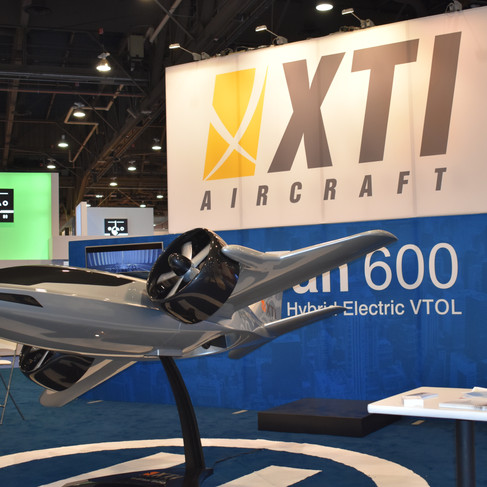Past, present and future of executive aviation - Impressions from NBAA-BACE 2017
- Eduardo Barbosa Bessa
- 21 de nov. de 2017
- 3 min de leitura
2017 is a special year in the executive aviation history as NBAA (National Business Aviation Association) celebrates its 70th anniversary. The association is responsible for gathering the industry's top names and hosting the annual NBAA-BACE (Business Aviation Convention & Exhibition), the world’s most significant civil aviation trade show. This year the event took place in Las Vegas and I had the honor to participate and see the bets by the top names in the executive aviation. The event featured 1,100 exhibitors, 100 aircraft on static display, approximately 27 thousand visitors and was a success.
The milestone 70th celebration also included some models of vintage restored and fully operational aircraft on static display. Among those a 1946 Douglas DC-3, a twin-engined aircraft that revolutionized the passenger transportation in the 1930s and 1940s, and a Stinson SR Reliant, a predecessor model of executive aviation, built between 1933 and 1941 by the former The Stinson Aircraft Company. Appreciating those rarity models of the early days and observing the aircraft significant evolution in these 70 years was very interesting.
As expected, the top five players in the executive aviation market attended the trade show: Bombardier, Cessna, Dassault, Embraer, and Gulfstream. Among these, only Embraer brought in real news. The Brazilian company unveiled the new Phenom 300E, an updated version of the Phenom 300, the best-selling executive jet for the four past years (2013, 2014, 2015 and 2016). With a completely redesigned cabin, Embraer has featured into its Phenom 300E the same "DNA design" of its Legacy 500. The seats in innovative and luxurious style and the new entertainment system added touchscreen control panels are a highlight. Also a highlight was the presence of Global 7000 by Bombardier, a 7,400 NM range aircraft that is in process of certification. It is worth mentioning the increasing number of “pre-flown” aircraft on static display, a clear evidence of a warmed up market niche.
Speaking of the future, two participating companies showcased new technologies that are a promising groundbreaking in the business aviation market: the AS2 supersonic by Aerion Corporation, and the hybrid electric VTOL (Vertical takeoff and landing) Trifan 600 by the start up XTI Aircraft.
Aerion consolidates itself as the first player to launch a supersonic business jet, the AS2. With 11-passenger capacity cabin and a range of 5,300 nautical miles, the AS2 will fly 1.5 times the speed of sound (Mach 1.5) over water and up to Mach 1.2 without producing a sonic boom. “Transatlantic travels can be reduced by up to 3 hours, thus saving up to four weeks a year in travel time for travelers of business jets”, said Ernie Edwards, Senior Vice President and Chief Commercial Officer, Aerion Corporation speaking at NBAA 2017. Aerion has set a target to achieve first flight by 2023 with FAA certification by 2025. However, the biggest challenge for supersonic travel is the lack of specific regulation as noise level allowance during takeoff and landing. Aerion and other manufacturers are working with the International Civil Aircraft Organization (ICAO) and the Federal Aviation Authority (FAA) towards developing environmental and noise standards that take into account the operation of supersonic aircraft.
Exhibiting for the first time, XTI Aircraft introduced the Trifan 600 that combines the speed, range and comfort of a business aircraft with the ability to takeoff and land vertically, like a helicopter. The Trifan 600 shall use a hybrid electric propulsion system, comprising a Honeywell turbine to move the generators that provide power for three electric powered ducted fans: one sitting in the fuselage to actuate at vertical takeoff and landing only, and two sitting on the wings; following takeoff these rotate 90 degrees and propel the aircraft at speeds up to 300 miles per hour. With a carbon fiber fuselage and a fly by wire controls, the Trifan 600 will seat up to 5 passengers. The maximum cruise altitude will be 29,000 feet and range will be 1,200 nautical miles. Besides the lower operating cost, also appealing is the reduction of total trip time or door-to-door time; The Trifan 600 is faster than a helicopter and despite it is slower than a jet, the need to drive to and from an airport is eliminated, resulting in shorter trip time. XTI has started the pre-sales program for the TriFan 600, at a launch price of USD 6.5 million and the aircraft is expected to be certified in 2025.













Commenti